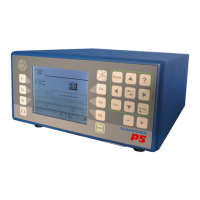P5 – Operator Guide 1
.
Introduction 1
1.
INTRODUCTION
Gauge computer used to control the grinding cycle. It can be customized to a variety
of applications and measuring heads. The gauge can control and integrate touch
probes and ultrasonic microphones in order to monitor air gap and crash protection.
The gauge processes the signals coming from the measuring head/s and/or the
various sensors and supplies information on the measurement to the machine’s logic
system. There are up to 7 outputs (controls) for changing feed rates and when the
zero size of the workpiece is reached to retract the grinding wheel.
Optional features include TIR, Ovality, Remspeed and Stock Removal.
1.1.
Operator Guide
This guide is customized to the grinding machine on which the gauge is installed and
describes its specific measurement application.
This guide was written for the machine operator. It will also be useful for plant
personnel who must perform maintenance and assistance technicians.
This guide describes the following gauge operator functions:
Selecting part types and cycles.
Viewing the measurement screens.
Zeroing the gauge system.
Correcting the measuring cycle zero.
Viewing and modifying the grinding cycle controls.
1.2.
Conventions
Conventions are standard methods of representing components or functions.
1.2.1.
Interface between gauge and user
The gauge software uses graphics and/or icons to show the various functions and
make comprehension and use easy and intuitive.
Other conventions used in this program are:
Numbers or text inside a dotted line can be changed.
Icons or text that appear as a phantom image (or grayed out) cannot be selected
on that page or are not available for the application and its options.
1.2.2.
Operator Guide
In order to make this guide easy to use, several typographical conventions were
chosen:
Folders, sub-folders and page names are in Italics.
Numbers or choices that can be changed are within quotes; i.e. “100 µm".
Front panel keys or software buttons are shown using the actual icon.
Section title references within the text are in bold.
Names of operator functions are followed by their icon.

